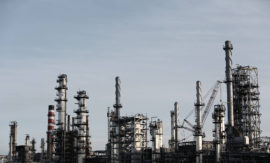The ERP / MRP II and lean / just-in-time concepts that are now standard practice in mechanical and apparatus engineering companies and in the automobile and aircraft industries are unable to fully handle the special requirements of the process industry. Manufacture of by-products, high-volume line or continuous production, large batch production, production without lots, mass production, and production structures with cycles are just some of the typical characteristics of the process industry.
Conventional concepts for master data and inventory management must therefore be extended. Materials and capacities become resources of equal value within the process, and processor orientation is the dominating factor. Process trains are therefore defined. A process train comprises several process stages that, in turn, are broken down into several basic manufacturing steps, or operations. A manufacturing step is linked to the resources required, particularly to the equipment. Lot control is indispensable to meet the product traceability requirements imposed by government bodies (especially the FDA).
Manufacture of by-products is not simply the consequence of certain chemical or physical aspects of the process (for instance, the simultaneous production of two substances during a chemical process by means of parallel or overlying chemical reactions during a production process). By-products can also be produced in a targeted fashion for reasons of economy. For example, a single production process may manufacture different products from sheet steel or steel bars to save setup costs.
The decisive factors for planning added value are often the actual production process and the required capacity, rather than the materials used. Such processes typically require a few, but significant, active substances, which are often kept in stock in large quantities. The value of the basic raw materials is often tiny compared to the overall production costs, which essentially means that adding value can only be economically viable if production facilities are utilized efficiently. Processor-dominated scheduling, the campaign principle in particular, respects this situation. The considerable setup costs that are often associated with production facilities for large batch production give rise to campaign cycles. Loss of materials caused by start-up and shutdown processes, shifting operating conditions in the production plant, or variations in the quality of raw materials result in nonlinear functions for the quantity of resources required in relation to the quantities of the product produced. The scheduling of production structures with cycles presents yet another challenge.
Long-term planning generally involves detailed data structures on account of the relatively small number of products to be scheduled and to incorporate high-volume line or continuous production and campaigns. One particular feature is known as pipeline planning, or scheduling across different locations that operate independently of one another. This type of planning environment is a frequent occurrence due to the cost of capacity and the regulation of the markets associated with the process industry.
Course 8: Sections and their intended learning outcomes

Course 8 – The Concept for the Process Industry
Intended learning outcomes: Produce characteristics of the process industry. Disclose processor-oriented master and order data management. Explain in detail processor-oriented resource management. Describe special features of long-term planning.

8.2 Processor-Oriented Master and Order Data Management
Intended learning outcomes: Produce an overview on processes, technology, and resources. Present the process train: a processor-oriented production structure. Disclose lot control in inventory management.

8.3 Processor-Oriented Resource Management
Intended learning outcomes: Explain campaign planning. Differentiate between processor-dominated Scheduling and material-dominated scheduling. Describe a nonlinear usage quantity and a product structure with loops.

8.4 Special Features of Long-Term Planning
Intended learning outcomes: Disclose the determination of the degree of detail of the master production schedule. Describe pipeline planning across several independent locations.

8.5 Summary
.

8.6 Keywords
.

8.7 Scenarios and Exercises
Intended learning outcomes: Differentiate between batch production and continuous production. Calculate an example of manufacture of by-products. Elaborate an example of production planning in process industries.

8.8 References
.
![Case [Course 8]](https://opess.ethz.ch/wp-content/uploads/2017/02/08-270x163.jpg)
Case [Course 8]
.

8.1 Characteristics of the Process Industry
Intended learning outcomes: Explain divergent product structures and by-products. Describe high-volume line production, flow resources and inflexible facilities. Produce an overview on large batches, lot traceability, and loops in the order structure.
